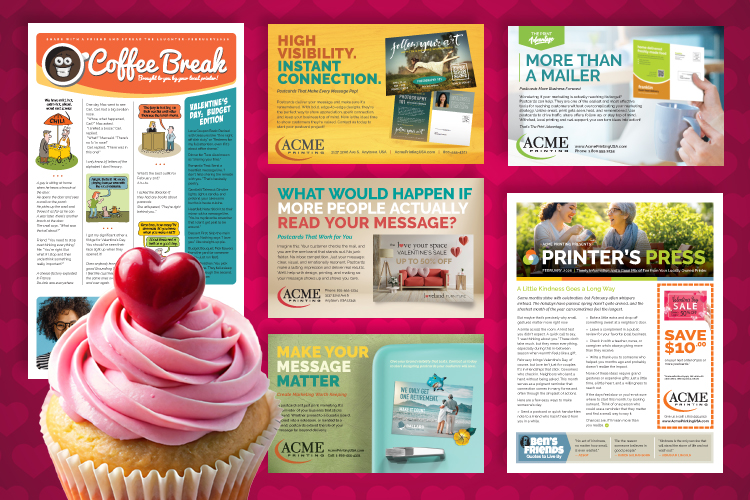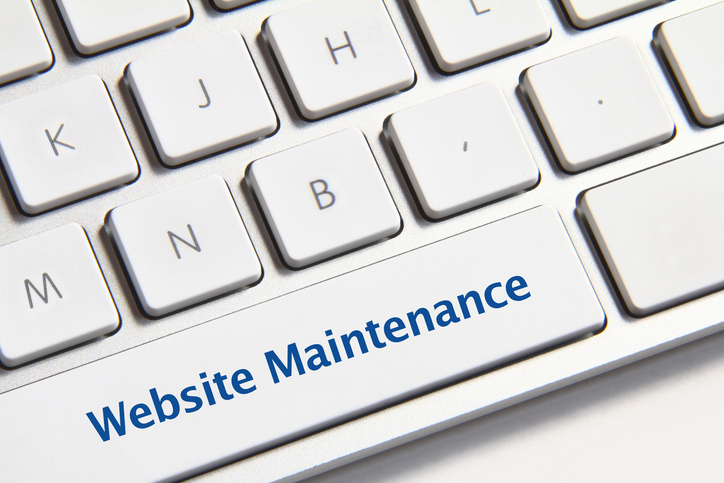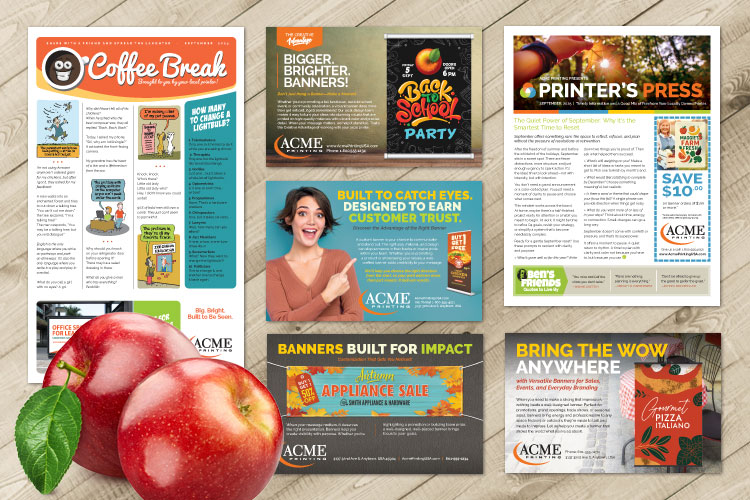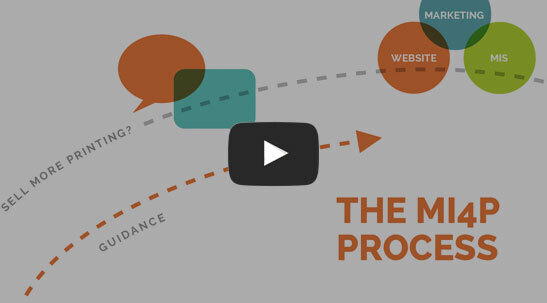Direct Mail For Printers: Postcards That Connect All Month Long

You don’t have to convince your customers that connection matters in February, but you can show them how simple, tangible pieces like postcards and newsletters make that connection feel warmer, more personal, and harder to ignore. The February 2026 Direct Mail For Printers content lineup (available now) leans into postcards and small-format print as the easiest way to say “we’re thinking of you” without a complicated campaign. From humor-filled newsletters and local postcard promotions to a nonprofit messaging guide, every piece is designed to help you start conversations, build loyalty, and sell more print with kindness at the center. Whether you use one piece or build a full campaign, here’s how to put this month’s content to work for your shop. Direct Mail For Printers Options Coffee Break Humor Newsletter Print Type: Folded newsletter self-mailerSize: 8.5″ x 14″ flat, trifold The Coffee Break newsletter is all about lighthearted connection, packed with clean jokes, a playful Valentine’s-themed sidebar, and a March 2026 calendar full of quirky dates and historical moments. This issue includes groan-worthy winners like: What’s the best outfit for February 2nd? A tu-tu. I got my significant other a fridge for Valentine’s Day. You should’ve seen their face light
Year-End Website Tune-Up for Printers: 7 Quick Wins Before January

If someone discovers your print shop for the first time, there’s a good chance they’re not walking through your front door. They’re finding you online. That’s why your website matters just as much as the beautiful job you just shipped. But for a lot of printers, the website is “that thing we’ll fix someday” while presses, people, and deadlines scream louder. If your site feels a little tired, a little out of date, or you’re simply not sure it’s helping you sell more printing, don’t beat yourself up. Many shops are in the same place. The good news: a simple year-end website tune-up for printers can make a real difference. You don’t need to rebuild everything. You just need a focused list of quick wins you can knock out before the ball drops. Why Year-End Is the Best Time to Fix Your Website You already think in seasons: back to school, holidays, trade shows, slow spells. The end of the year is when you naturally take stock, clearing out the shop, wrapping up invoices, reviewing the numbers, and planning for next year. Your website deserves a spot on that list. A short tune-up now helps you look more current and
Are You Still Playing “Kick the Can” with Your Printing Business Pricing?

Remember the childhood game of “kick the can”? It was fun, simple, and easy. You’d kick a can down the street, pushing the challenge just a little further ahead, never truly resolving it, just postponing the inevitable. But when you’re running a printing business, playing “kick the can” with your pricing strategy isn’t fun; it’s risky. Why Traditional Pricing Feels Comfortable (But Isn’t) Many printers rely on gut instincts and legacy methods to price their services. It feels comfortable. You know your clients, you know your business, and you think you know your costs. But the reality is often different. You’re frequently pricing based on assumptions or guesses, not facts. And when uncertainty creeps in, you instinctively compensate by inflating costs in areas you believe are already covered. You’ve effectively kicked the can a little further down the road. You haven’t solved your pricing discomfort; you’ve just displaced it somewhere else. The Real Problem: Avoiding the Uncomfortable Truth Let’s face it. The reason you’re increasing the perceived cost of something you’re already confident about is that there’s another area in your pricing you’re less certain of. Maybe it’s labor, maybe it’s materials, maybe it’s overhead. You have a sense that
How to Help Your Print Buyers Send Print-Ready Files Every Time

You’ve been there: a new order comes in, the deadline is tight, and the file? Not quite ready. Whether it’s missing bleeds, fuzzy images, or font issues, file prep problems can slow everything down and create more stress than they should. The good news? You can head off most of those headaches by giving your print buyers a little help without piling more work on your plate. Here are four practical ways to set them up for success. 1. Share Common File Prep Pitfalls Not every client knows what goes into a production-ready file, and that’s OK. A simple, printer-approved checklist can make a big difference. That’s why we put together a free guide on the most common file prep mistakes. It’s an easy win: give your customers the info upfront, and you’ll both save time later. >> FREE DOWNLOAD: Top 7 File Prep Mistakes 2. Offer Setup Support That Scales If your clients design their own pieces, you know how often things like margins, trim areas, and safe zones get overlooked. That’s where artwork layout templates can help. Available as a website add-on, these downloadable templates (branded with your company’s logo) include clear design boundaries for popular products and
“No One Reads Email” Isn’t a Strategy For Printers

We’ve heard it before, and maybe you’ve even said it yourself: “I delete most of the emails I get. I don’t think email really works.” It’s an honest thought. But here’s the thing: you aren’t your print buyer. Just because email doesn’t resonate with you doesn’t mean it doesn’t work. In fact, many of your print buyers rely on email as their primary way of hearing from businesses they trust. Some aren’t active on social media. Some toss printed mail in the trash. Some skip websites altogether and just wait for updates to hit their inbox. Visibility For Printing Companies Matters If you’re not showing up where your customers are paying attention, even if that’s not where you prefer to engage, you’re invisible.And when you’re invisible, you’re forgotten. That “I didn’t know you did that” moment?That’s the sound of a missed opportunity echoing in your inbox. You’re Not Trying to Reach Everyone. Just the Right Someone. It’s easy to assume your audience behaves like you do. But marketing works best when you meet people where they are, not where you wish they were. Even if 90% of your list scrolls past your email, that remaining 10% may be your best
Print Campaigns That Pop: Banner Strategies and More

As the fall season draws closer, September brings the perfect opportunity to help your customers refocus, reconnect, and stand out. With routines resuming and back-to-business energy in the air, now is the time for printers to help clients deliver marketing that gets noticed, especially with banners that boost visibility and drive results. The September content—available now for download and print—features tools that make your clients’ messages clear, bold, and effective. From high-impact banners to lighthearted newsletters, every piece is designed to turn heads and support real marketing goals. Here’s a look at what you can start producing today for September outreach. Direct Mail For Printers Options Coffee Break Type: Direct Mail Humor NewsletterDimensions: 8.5″ x 14″Coffee Break Highlighting humor and fun themes, Coffee Break keeps connections strong with a fresh mix of jokes, trivia, and notable dates. This issue features punchlines like: “What do you give a man who has everything? Penicillin.” “My grandma has the heart of a lion—and a lifetime ban from the zoo.” The sidebar article plays with the age-old question, “How many does it take to change a lightbulb?” with witty answers from optometrists, politicians, and programmers. Paired with an October calendar full of trivia-worthy milestones,
Trust Builders For Printers: 8 Website Details That Help You Win Big Clients

What makes a high-value customer say, “Yep, this is my printer”? You could have the best pricing, stellar turnaround, and years of experience, but if that trust doesn’t come across on your website, the sale might not either. And for your dream clients, the nonprofits, schools, manufacturers, and marketing teams you really want, your website is the first sales call. So let’s make sure it’s pulling its weight. Why Trust Details Matter More Than Ever When print buyers visit your website, they’re often thinking: “Can I trust this company to do what I need, on time, without making me look bad?” They’re not looking for bells and whistles. They’re looking for signals—visual, verbal, and structural—that show your shop is experienced, approachable, and built to deliver. The 8 Trust Builders Your Website Can’t Afford to Miss 1. Clear, Clickable Navigation Your website’s navigation should feel like second nature. A first-time visitor should be able to land on your home page and know within seconds what you do, what to click next, and how to place an order. If your website is crammed with vague or internal-facing terms, simplify it. Use buyer-friendly language like “Order Printing,” “Request a Quote,” or “What We
Stop Thinking Print Can’t Keep Up

It’s been a while since I’ve had the chance to step out of the day-to-day marketing mindset to remind you of, and hopefully inspire you with, a bigger idea. So, today’s the day! After meeting with printer after printer to discuss their marketing strategies, there’s been this growing “earworm” in the minds of printers that I think needs to be said out loud. You see, there’s a quiet little lie infiltrating our industry. Maybe you’ve noticed it, and maybe it’s crept into your thoughts, too. It’s the lie that says, “Print can’t keep up.” It’s not something people in the industry usually say directly. But you feel it, and I hear it in your voices when orders slow, when clients lean harder into digital, and when it feels like everything is changing faster than you can keep up. To be clear, I’ve fought this same earworm at times. Even being in the printing industry with you for almost 30 years, I can struggle the same way. When Doubts Start to Creep In There are moments when I’ve stared at our own direct mail offerings and thought, Is this still enough? I’ve talked with printers who’ve run successful businesses for




